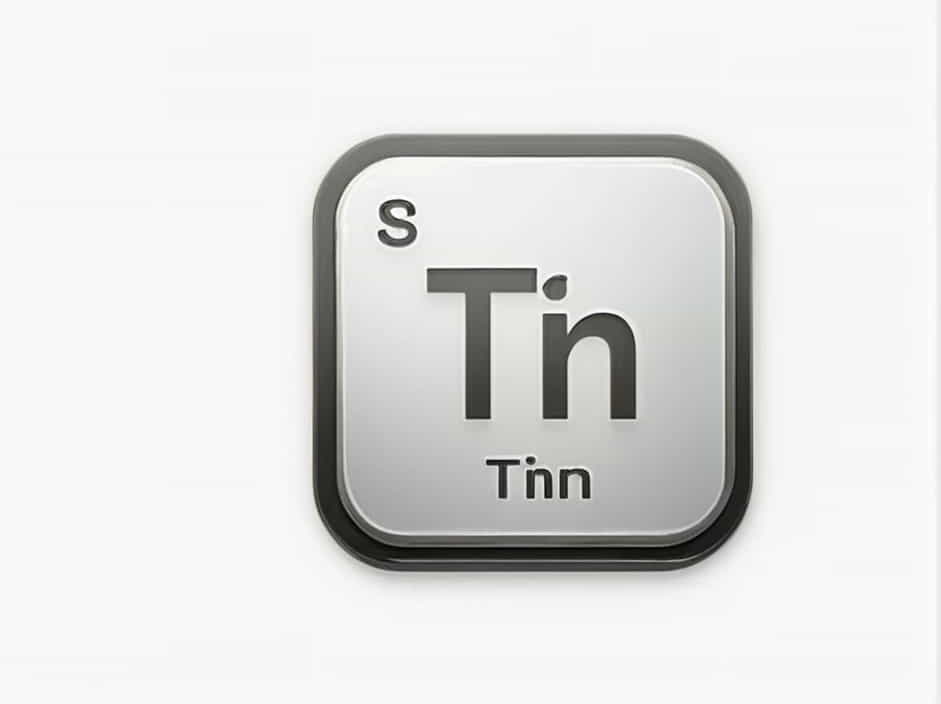Tin is a well-known metal that has been used by humans for thousands of years. It is commonly found in everyday objects such as cans, coatings, and even alloys like bronze. But what is the symbol for tin on the periodic table? The answer is Sn.
This topic will explore the chemical symbol of tin, its properties, uses, and significance in chemistry and industry. Understanding the role of tin in the periodic table can help us appreciate its importance in science and technology.
What Is the Symbol for Tin on the Periodic Table?
The chemical symbol for tin is Sn.
Why Is Tin Represented as Sn?
The symbol Sn comes from the Latin name for tin, "Stannum". Many elements on the periodic table have symbols derived from their Latin or Greek names.
For example:
-
Gold (Au) comes from Aurum
-
Silver (Ag) comes from Argentum
-
Tin (Sn) comes from Stannum
This tradition helps maintain consistency in the scientific naming of elements across different languages and cultures.
Basic Information About Tin
Here are some important facts about tin:
| Property | Value |
|---|---|
| Symbol | Sn |
| Atomic Number | 50 |
| Atomic Mass | 118.71 u |
| Group | 14 (Carbon Group) |
| Period | 5 |
| Density | 7.31 g/cm³ |
| Melting Point | 231.93°C (449.47°F) |
| Boiling Point | 2,602°C (4,716°F) |
| State at Room Temperature | Solid |
Tin belongs to Group 14 on the periodic table, which includes carbon (C), silicon (Si), germanium (Ge), lead (Pb), and flerovium (Fl). These elements share similar chemical properties.
Where Is Tin Found?
Natural Occurrence
Tin is not found in its pure form in nature but is extracted from ores. The most common tin ore is cassiterite (SnO₂), which contains tin dioxide.
Major Tin-Producing Countries
The top tin-producing countries include:
-
China (largest producer)
-
Indonesia
-
Myanmar
-
Peru
-
Brazil
These countries extract and refine tin for use in various industries worldwide.
Physical and Chemical Properties of Tin
Physical Properties
-
Soft and Malleable: Tin is easy to shape and bend.
-
Silver-White in Color: It has a shiny metallic appearance.
-
Lightweight: Tin is not as dense as many other metals.
Chemical Properties
-
Resistant to Corrosion: Tin does not easily rust, making it ideal for protective coatings.
-
Forms Alloys Easily: Tin is often combined with other metals to create stronger materials.
-
Reacts with Acids and Alkalis: Tin can dissolve in acids like hydrochloric acid (HCl), forming tin chloride (SnCl₂ or SnCl₄).
Uses of Tin in Everyday Life
Tin is a versatile metal used in many applications. Here are some of the most common uses:
1. Tin Coatings (Tin Plating)
Tin is often used as a protective coating for other metals.
-
Tin-plated steel is used to make food cans, preventing corrosion.
-
It protects electrical components from oxidation.
2. Tin Alloys
Tin is commonly combined with other metals to improve strength and durability.
-
Bronze (Tin + Copper): Used for sculptures, medals, and musical instruments.
-
Solder (Tin + Lead or Tin + Silver/Copper): Used in electronics and plumbing.
-
Pewter (Tin + Antimony + Copper): Used for decorative items and tableware.
3. Glass Manufacturing
Tin is used in float glass production, where molten glass is floated on liquid tin to create smooth, flat glass surfaces.
4. Aerospace and Electronics
-
Tin is used in semiconductors and electronic circuit boards.
-
It plays a role in spacecraft technology due to its stability and resistance to oxidation.
5. Medicine and Cosmetics
-
Tin compounds are used in toothpaste to prevent cavities.
-
Some tin-based medicines treat parasitic infections.
Why Is Tin Important in Chemistry?
Tin plays a vital role in chemistry because of its unique properties and reactions.
1. Tin Has Multiple Oxidation States
Tin commonly exists in two oxidation states:
-
Tin(II) (Sn²⁺): Found in compounds like tin chloride (SnCl₂).
-
Tin(IV) (Sn⁴⁺): Found in tin dioxide (SnO₂), used in ceramics and coatings.
2. Tin Shows Allotropic Forms
Tin has two main allotropes (different physical forms of the same element):
-
White Tin (β-Tin): The common metallic form, stable at room temperature.
-
Gray Tin (α-Tin): Brittle and non-metallic, occurring at low temperatures.
At temperatures below 13.2°C (55.8°F), white tin can slowly transform into gray tin, a phenomenon known as tin pest.
Historical Significance of Tin
Tin has been used by humans for thousands of years.
1. The Bronze Age (3300-1200 BCE)
Tin was a key component in the Bronze Age, when early civilizations discovered that mixing tin with copper created bronze.
- Bronze tools, weapons, and statues were stronger and more durable than pure copper.
2. Ancient Uses of Tin
-
The Romans used tin in coins, utensils, and armor.
-
China and the Middle East developed tin-based ceramics and glazes.
3. Industrial Revolution and Modern Uses
With the advancement of technology, tin became essential in electrical circuits, food packaging, and industrial machinery.
Interesting Facts About Tin
-
Tin cries: When bent, tin makes a cracking sound called "tin cry" due to its crystal structure.
-
Low toxicity: Tin is non-toxic and safe for use in food storage.
-
Used in superconductors: Tin-based materials exhibit superconductivity at very low temperatures.
-
Tin Whiskers: Thin filaments of tin can grow on electronic components, sometimes causing short circuits.
The symbol for tin on the periodic table is Sn, derived from its Latin name Stannum. Tin is a useful, corrosion-resistant metal with many industrial and scientific applications. It plays a vital role in alloys, coatings, electronics, and history.
Understanding tin’s properties, uses, and significance helps us appreciate its role in chemistry, manufacturing, and daily life. Whether in food cans, circuit boards, or ancient artifacts, tin remains one of the most valuable metals in human history.
